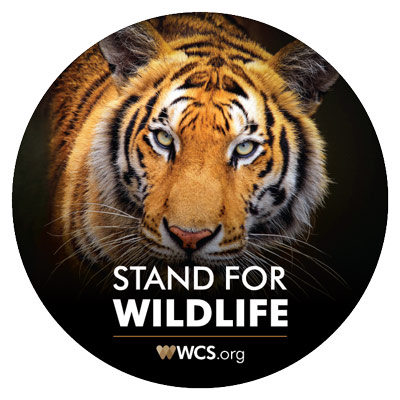WCS Forests and Climate Change
- Forests capture CO2 from the atmosphere via photosynthesis and store it in their biomass. Terrestrial ecosystems absorb 30% of the anthropogenic CO2 emissions emitted every year.
- Healthy forests return moisture to the air through evapotranspiration, so that areas downwind of forests receive more rainfall than those downwind from urban, agricultural, or degraded forest landscapes.
High-Integrity Forests
- When thinking about the loss of ecosystems, we sometimes look at their remaining area (e.g. forest cover). But equally important to consider is the integrity of the ecosystem - the degree to which function, structure, and composition are similar to its natural or reference state.
- High integrity forests typically provide higher levels of many forest benefits including: carbon sequestration and storage, healthy watersheds, traditional forest use, and contribution to local and regional climate and forest-dependent biodiversity. Ecological resilience, including to drought and fire, is higher in more intact forests.
- 40% of forests still have high integrity, and this is declining year on year.
- Declines in ecosystem integrity generally mean reduced suitability or availability of habitat for native biota, disrupted ecological processes and functions, diminished ecosystem resilience, and reduced capacity to sustain species and to provide many other ecosystem services.
- Maintaining high connectivity of intact forests across wide areas enables species to recolonize after harmful local events in a way that cannot occur in isolated fragments, further contributing to healthy and functionally diverse natural communities.
People

Forest loss and degradation globally are driven primarily by agricultural expansion and secondarily by extractive activities – logging, mineral and fossil fuel extraction. These drivers are enabled by misaligned financial incentives and governance regimes that fail to recognize the values provided by forest ecosystems. This results in land use decisions that favor short-term private gains over public goods.
1. Protecting high-integrity forests and peatlands
Given the importance of high integrity forests globally, our team is working to:
- Advance rigorous science for measuring and valuing high integrity forest ecosystems and including them in spatial conservation planning processes and other venues so their value can be recognized and incorporated into national legislation and policies, and global commitments — including in partnership with Indigenous Peoples and local communities, and with the incorporation of Indigenous science perspectives.
- Catalyze global action by securing new multilateral policy commitments, funding, and financial mechanisms that incentivize high integrity forest and peatland conservation, working with forest country champions.
- Consolidate and expand protections in the world’s most important high integrity forest regions, through policy reforms, incentives and support to implementation efforts by community, Indigenous, and government partners.
2. Reducing deforestation and forest degradation
The Forests & Climate Change Team works with the Markets Team to address the drivers of deforestation from commodity production, including through:
- Partnerships and interventions that create zero deforestation supply chains, and that improve farmer livelihoods through the ‘Forest Frontiers’ approach; and
- High integrity carbon market finance, an area where we aim to place WCS in a leadership role in transitioning carbon market finance from free-standing REDD+ projects to larger-scale REDD+ jurisdictions, with individual projects nested within them.
3. Restoring forests in and around priority landscapes
Our forest restoration program is organized around four main objectives:
- Provide implementation funds for projects to pilot restoration efforts in conservation landscapes
- Develop financial mechanisms for the scale-up of restoration efforts where this aligns with other programmatic priorities
- Support the monitoring and evaluation of restoration efforts to improve practices, and increase transparency and accountability in the use of funds
- Promote the evolution of global standards of practice through the sharing of data, experience and learning in international policy processes.
Learn more about each of our program priorities:
Protecting High Integrity Forests & Peatlands
Reducing Deforestation and Forest Degradation
Forest Restoration
Resilience and Adaptation
Cross-Cutting Themes
Priorities for embedding ecological integrity in climate adaptation policy and practice

Forest Landscape Integrity Index (FLII)

Carbon Bomb
In October 2019, a study in Science Advances, co-authored by WCS, said that the climate impact from the loss of intact tropical forests had been grossly underreported. In fact, the researchers said, carbon impacts are six times higher than previously thought due to the loss of these forests between 2000 and 2013. Further, they warn, the climate change mitigation benefits from them will soon dwindle if their rate of loss continues to accelerate.
Press Release
In the Media
Nine Ways to Avoid the Amazon Tipping Point
The Amazon forest system has a key role in regulating the global climate system, but there is a growing concern that it may cross a tipping point within this century, potentially leading to drastic and irreversible ecosystem shifts, write WCS's Emilio Vilanova and others.
Sign Up for Email Updates
Get news from the field and learn about ways you can help Earth’s most threatened species.


















